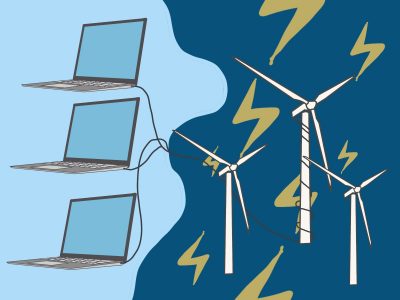For decades, there has been lots of talk about “supercomputers.” Maybe you’ve even seen pictures of huge computers that fill a room, computing “floating-point” operations per second, or FLOPs, instead of instructions per second.
These machines are tailored for data-intensive and computation-heavy scientific and engineering projects. These range from quantum mechanics and weather forecasting, to molecular modeling and nuclear fusion research.
They’re pretty cool.
But what if I told you that the power of a supercomputer may actually lie within the machine with which you’re reading this article?
GPU mining was first made in 2010. Although its current application is most known for cryptocurrency minting, the mission of pooled computing is to bring together a large number of users to compute complex, data-intensive and computation-heavy problems. A community supercomputer, if you will.
Mining has largely been put down as one of the reasons for the world’s current chip shortage, as the demand for components capable of computing these computations have skyrocketed with the rise in the prominence of Bitcoin, among others. However, the technology behind GPU mining actually has a lot of exciting applications.
One of the most prominent examples of pooled GPU computing for other uses is Folding@Home. It’s essentially the same thing as pooled mining, except instead of the power and computations going into minting new Bitcoin or Ethereum, the project powers research and simulations for COVID-19 and other diseases being researched at Washington University in St. Louis.
Though it’s easy to write off an individual’s participation in such a network as insignificant, we can see just how powerful the technology can be just from the results of the Folding@Home project alone. By a conservative estimate of the aggregate computer they have been able to put together through volunteers, Folding@Home became the first exascale computer — a computer capable of calculating an exaFLOP.

While that doesn’t mean much to you or me, their “computer” now has five times the performance of the world’s fastest supercomputer, IBM’s Summit supercomputer, at the time of their calculations. What’s even more impressive is that the Folding@Home project may have actually produced more simulation data than in the entire history of science.
For most of the duration of the pandemic, the team at WashU performed a majority of its research on COVID-19 and have produced a significant amount of data in its research to find therapy for the disease.
While GPU mining may have been the most profitable way to offer up your computing power to the community, participants in the Folding@Home project, as well as numerous other distributed computing projects, are doing very valuable work in science.
With about 400,000 volunteers from around the world, the Folding@Home project became the largest supercomputer in the world by a huge margin. There are about a million people around the world that are currently mining Bitcoin, which has become the 14th largest currency network in the world, right behind the Swiss Franc.
Imagine the power that a scientific distributed computing project could produce with that number of participants.
The future of science, the future of computers and, in the case of some of the research, the future of your health, are in the hands of all of us in the form of the computing power that we can lend.
Distributed computing, mining, folding or whatever you’d like to call it is the future.
And the future looks bright.























































































































